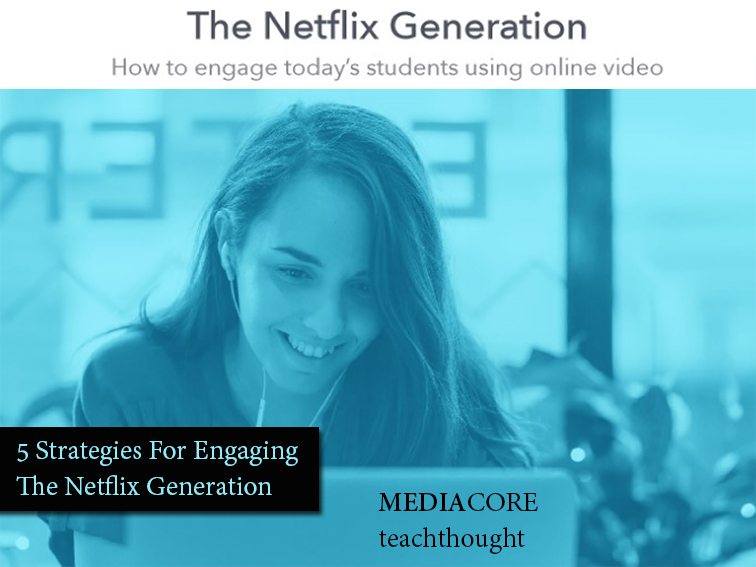 5 Strategies For Engaging Students With Video
5 Strategies For Engaging Students With Video
by James Cross
Online video is taking the world by storm, and today’s students are the biggest consumers of online video content — they’re the ‘Netflix Generation’. These students have grown up in a world where video is available instantly, on-demand, and on any device.
Combined with the rise of flipped and blended learning methodologies, it’s natural that today’s educators are seeking innovative ways to take advantage of video.
But video is complex – and in the past, it’s been difficult for educators to make use of it for learning. The good news is that it’s easier than ever to take advantage of online video; with cloud video delivery becoming increasingly intuitive and affordable, cutting–edge video technologies are now firmly within the grasp of universities and instructors.
Download our free eBook for a full overview of the core technologies you need to take advantage of to deliver students the online video experience they expect in 2014 and beyond.
Based on our experience working with with leading universities and colleges across the world, here are five simple strategies that institutions seeking to engage the Netflix Generation can adopt.
5 Strategies For Engaging Students With Video
1. Merge compelling video into compelling content
Incorporating well–produced video content into an online course is a great way of increasing student engagement, and helps offer an enhanced learning experience that beats text-only content hands down.
Video can bring an LMS course to life, and with tools that allow video to be safely embedded into LMS courses it’s easier than ever to offer mobile-friendly video through your LMS.
2. Capture sessions and share them immediately
Another defining feature of the ‘Netflix generation’ is their lack of patience; instead of waiting for shows to air each week, they take advantage of the instant and immediate access to content that the internet provides. They expect the same of university–provided content.
Many universities are investing in lecture capture systems which make lecture sessions available immediately to students, allowing them to re-watch and re-visit lesson content at their own pace shortly after the original presentation. There are a variety of ways of doing this — from dedicated capture appliances, to simple tablet and mobile-based applications like MediaCore Capture which allow content to be captured and shared immediately from mobile devices.
3. Make it easy for instructors to create and share video
Video may be a highly effective and engaging learning tool, but if it’s difficult for instructors to actually use it regularly and incorporate into their teaching then its potential impact on learning will be severely limited. It’s crucial that institutions ensure that faculty are well supported, well trained, and have access to tools which make video learning resources easy to create, share, and incorporate into their courses.
4. Optimize content for playback
It’s crucial that video learning content is available to students across any device, and in a way that allows them to browse, search, watch and engage with it in a fluid and intuitive way.
Content should be converted to ensure that it works across all devices (we cover the technical side of this in the following section), and it’s also important to ensure that content is appropriately tagged and has relevant metadata, allowing students to quickly find the media that’s relevant to their learning.
Thinking about length is important, too. In many circumstances, ‘bite-size’ video content (1 — 3 minutes in length) that students can view informally on their mobile device is the most effective way of sharing content.
There’s some interesting data on how video length affects engagement.
5. Empower students to become content creators
Encouraging students to create and share their own video content is a powerful way to demonstrate their learning. Many universities have already realised this and are already allowing students to create content as part of their course work.
Video assignments — which ask students to submit a video recording, rather than a traditional text-based assignment — are one way of achieving this within a traditional academic context. This allows instructors to grade student video submissions within the LMS in the standard way.
Many institutions are encouraging students to create and share their own content in a more open-ended way, too — via a private university YouTube-like environment. Today’s students have grown up with a sharing mindset, and allowing them to demonstrate their learning in a creative way, whilst adding value for their peers by sharing it, is a powerful way of engaging them.
5 Strategies For Engaging Students With Video